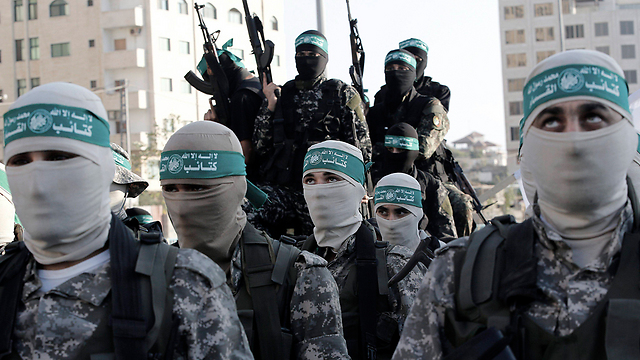The deaths of two children from Beit Lahia, who were injured by the Air Force’s bombing on Friday night, is not just a human tragedy that we should regret and apologize for. The killing of children in what is called in military jargon "collateral damage" calls into question the policy behind Israel’s retaliation to the rocket fire from Gaza since Operation Protective Edge.
At the end of the operation, the political leadership committed to not tolerate any violation of the ceasefire. Indeed, less than a month later, the Air Force attacked targets in the Gaza Strip in response to rockets at Sderot and Ashkelon. Slowly, from attack to attack and retaliation to retaliation, a stereotypical and predictable modus operandi began to take shape, which is far from what is known in warfare as surprise, deception, concentration of effort or original thought.
It starts when rockets are fired from Gaza into Israeli communities or at IDF forces near the border fence - which Hamas, including last Friday, is not directly responsible for. This does not prevent anyone in the top security echelons to declare that Hamas is responsible for everything that is done in the Gaza Strip, and therefore should be punished. A few hours pass and the Air Force attacks targets, which according to the IDF Spokesperson are Hamas’ infrastructure and facilities. In short, "real estate targets." Most of the attacks end without casualties to Hamas, it threatens to respond, and another round ends. Since Operation Protective Edge, there have been more than 30 such instances.
This is an embarrassing military conduct that is futile, pointless and achieves no military objectives, and seems to not be able to influence what the other side does. The truth is that the IDF attacks empty targets. Those who believe in conspiracies can even suspect Israel warns Hamas prior to the attacks. But there is no need for conspiracy theories: Hamas knows the game and knows the IDF gives them a few hours after the rocket fire before the air strikes come, so they can go into shelters.
The IDF also understands that these bombings are a type of message, and there are those in the IDF’s top brass that detract from this method of action.
But the political echelons have their own considerations. First of all, the government announced there would be no tolerance for rocket fire from the Gaza Strip, even if it did not cause damage, and promised that Hamas would be punished, even if it was not behind the shooting. And in general, the citizens of Israel need to see that the government is doing something.
But alongside the public messages, there is also a hidden message. Since Operation Protective Edge, Hamas has hardly taken part in any military operations against Israel. It prepares for war, terrorizes and incites in the West Bank, helps ISIS in the Sinai, and often ignores the rogue organizations that fire rockets towards Israel, but the organization itself makes no effort to heat up the border.
Israel has an interest that Hamas persists in this policy of "restraint”. As long as it is not perceived as collaborationist by the Palestinian public, or as having temporarily given up on the resistance against Israel, it can continue the policy of restraint in stopping terror attacks and rocket fire against Israel. Therefore, the most effective way to preserve Hamas' image among the Palestinians as a militant organization is to attack it. This allows Hamas spokespeople to present it as an organization that is first on the front line facing the brutal Israeli attacks, unlike the collaborators from Ramallah.
This is a paradox. We actually "help" Hamas by attacking it. Israel currently has an interest in keeping Hamas’s government in order to maintain some sort of stability in Gaza. Hamas constitutes a barrier to internal chaos and the fall of Gaza to the hands of ISIS and similar organizations. This ruse works when there are no casualties, and certainly not civilian ones. When children are killed, it breaks the rules of the game and poses a problem for Hamas. The Israeli public demands protection, which might cause Hamas to really retaliate. Hamas may contain the latest incident, and allow the charade to continue. But the model of airstrikes that cause tolerable damage and no civilian casualties might exhaust itself.




















